- 7:00 am
Exclusive: Microsoft Has Stopped Manufacturing The Kinect
But its influence, and core technology, lives on across the industry.
Manufacturing of the Kinect has shut down. Originally created for the Xbox 360, Microsoft’s watershed depth camera and voice recognition microphone sold ~35 million units since its debut in 2010, but Microsoft will no longer produce it when retailers sell off their existing stock. The company will continue to support Kinect for customers on Xbox, but ongoing developer tools remain unclear. Microsoft shared the news with Co.Design in exclusive interviews with Alex Kipman, creator of the Kinect, and Matthew Lapsen, GM of Xbox Devices Marketing.
The Kinect had already been slowly de-emphasized by Microsoft, as the Xbox team anchored back around traditional gaming to counter the PS4, rather than take its more experimental approach to entertainment. Yet while the Kinect as a standalone product is off the market, its core sensor lives on. Kinect v4–and soon to be, v5–powers Microsoft’s augmented reality Hololens, which Kipman also created. Meanwhile, Kinect’s team of specialists have gone on to build essential Microsoft technologies, including the Cortana voice assistant, the Windows Hello biometric facial ID system, and a context-aware user interface for the future that Microsoft dubs Gaze, Gesture, and Voice (GGV).
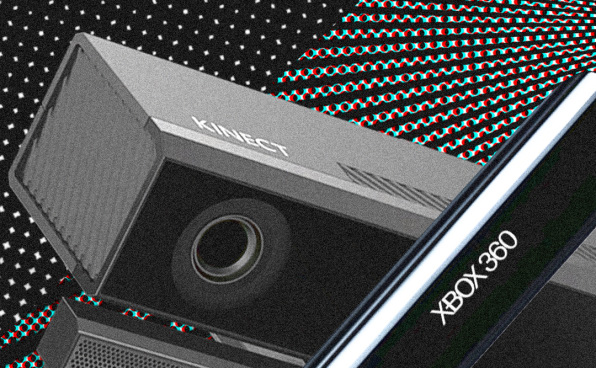
As one of the first journalists to try Kinect back in 2010, though, it was immediately apparent to me that Kinect was a lot more important than what was then popularly framed as Microsoft’s Nintendo Wii killer. (Remember the Nintendo Wii?!?) It was Microsoft’s greater attempt to blur the line between the human body and the human interface–beyond the existing limitations of keyboards, mice, and even touch screens.
As I wrote at the time, “There’s something very special about using Microsoft’s Kinect system, something that separates it from every other combination of software and hardware I’ve ever used. Kinect adapts and accommodates the user. I’m not learning it; it’s learning me . . . I’ve never felt that a computer understood me—a flesh-and-bone human—so well.”
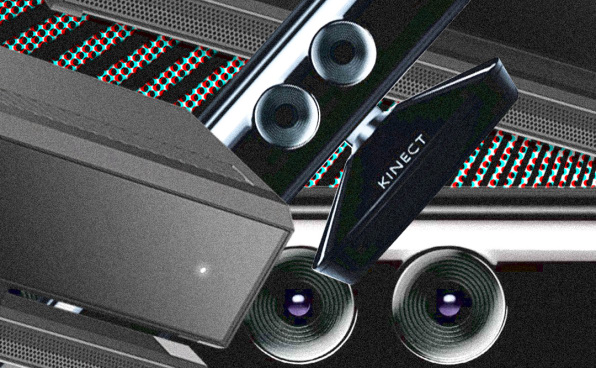
“Trust is something you earn in drops and lose in buckets,” says Kipman, alluding to industry-wide concern over consumer privacy. “I’d say Kinect started the process in 2010 in having to earn drops of trust. Any number of [bad] events in the world, each one, you lose a bucket.” But it wouldn’t be trust, or privacy, that would lose the Xbox consumer. It would be a fickle fanbase that thought innovation came at the price of fun.
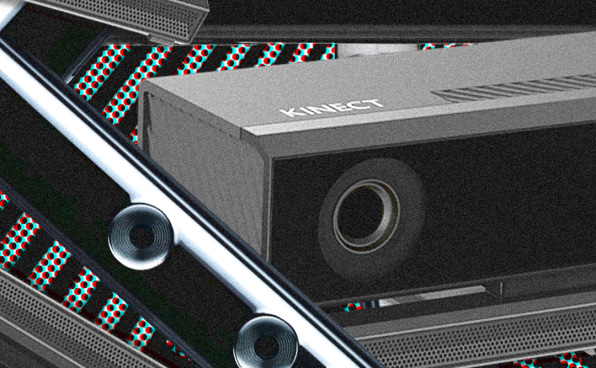
Inventor Vs Consumer
“Oh my god. Jesus. There’s my reaction. You can quote me saying, ‘Oh, comma, shit, period.'”
That’s Golan Levin, director of the esteemed Studio for Creative Inquiry at CMU, when I broke the news that Kinect is being discontinued. His lab, and others like his, use Kinect for everything from experimental art, to creating next generation UI prototypes. It’s been a vital tool to the greater research community.
“You know, we’re all at the whim of capital. And there’s no expectation that Microsoft should do something that doesn’t support their bottom line,” he continues, choosing the words of his swallowed rant very carefully. “But this is one of those times I’m sad to hear that a tool which is used for so many different applications, and is so ubiquitous, and has served crucially as a platform for so much creative experimentation, cultural progress, and secondary innovation, in so many different fields, isn’t supporting their core business.”
“Someone has made the decision that there aren’t enough games being sold that use it and it’s a shame,” he concludes. To at least some extent, that’s true.
If there’s one thing that went wrong with Kinect as a market success, you might call it “gamers.” While the device certainly had its functional flaws, including lag and occasional trouble hearing the user–it caught quick traction as an Xbox 360 accessory. The amazing games, however, never really arrived on the 360. There was no franchise with a $100 million budget developed for the Kinect, like a Call of Duty, or a Grand Theft Auto. In turn, Microsoft seems to have formulated a sensible plan. To ensure it was worthwhile for developers to invest heavily into Kinect games, it doubled down on Kinect, bundling it in every Xbox One it sold. That would ensure a larger market. However, Microsoft would also design the Xbox One to reserve a small part of its RAM and processing power, at all times, for the Kinect itself–meaning game developers couldn’t tap those resources for their own graphics and physics.
As the Xbox One was announced, it promised a living room computer that could control your games, cable box, and even, one day, your entire home, in a combination of spoken words and gestures that would be accessible to anyone. Amid innovative UI, Sony strategized the perfect counterpunch. On stage, at the E3 gaming convention just three weeks after the Xbox One’s announcement, then-CEO Jack Tretton delivered a borderline quiet speech, stating in a slow cadence that Sony “focused what gamers want most . . . for instance, PS4 won’t impose any new restrictions on the use of–” The discernibility of the quote cuts out there because the crowd is cheering so loud, knowing that the full system resources of the PS4 would be made available to developers. Tretton then hit on other concerns about the Xbox One, promising that Sony was a gamer’s first company, and announced a lower price for the PS4. Those sentiments echoed through message boards like Reddit, becoming something of a rallying cry to self-ascribed “hardcore gamers.” Years later, the PS4 is reported to have outsold the Xbox One by a factor of 2:1. And Microsoft, in an attempt to limbo the Xbox One’s price down and get more gaming performance out of its chipset, unbundled the Kinect and freed its dedicated system resources. The Kinect was no longer a mandatory purchase with the Xbox, diminishing any guaranteed market for Kinect game developers.
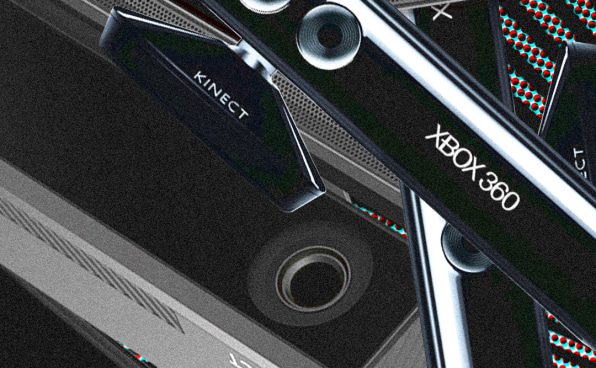
But Levin, and other researchers like him, adored the Kinect for its forward-looking technologies. “The important thing about Kinect is it showed you could have an inexpensive depth camera. And it supported the development of thousands of applications that used depth sensing,” Levin says. He points out that it was literally Microsoft Kinect hardware that made it possible for a startup like Faceshift to exist. Built to perform extremely 3D tracking of the human face that’s suitable for biometric security, Apple acquired Faceshift to replace its thumbprint scans. And to take advantage of the technology, Apple essentially built a Kinect clone right into the iPhone X, having acquired PrimeSense in 2013, the Israeli company that developed 3D tracking technology that Microsoft licensed for the first Kinect.
“That’s one of thousands of applications Kinect made possible,” Levin continues. “Not to mention its immense impact on computer research, robotics research and interactive media arts, which is my field.” Some of Levin’s own students used Kinect to make a documentary in pointillist 3D–and then, expanded the technique to create an interactive film inside a real NYC subway car. Today, Levin points out that there are other depth-sensing cameras on the market, aside from the hackable, standalone Kinect. But he also adds that, to all the museums which feature Kinect-powered interactive art in their exhibitions? They might want to go on eBay and buy a few backups. (I suspect that Levin himself is making a trip to eBay today, too.)
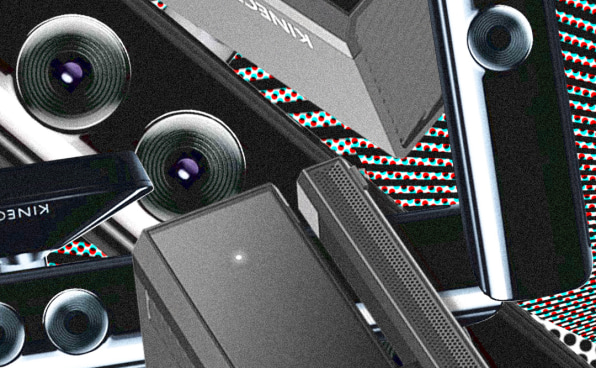
Kinect Evolved
The Kinect may be done for gamers and researchers, but it’s not disappearing entirely. The truth of development at major corporations is always more nuanced than the fate of any single product. And aside from the fact that key Microsoft technologies like Cortana were built from Kinect, Kinect is still a vital sensor platform in which the company will continue to invest.
Skyping with Alex Kipman, he whiteboards out the last 10 years of his life–from developing the Kinect in 2007, to the Hololens products of tomorrow.
“We looked at the problem ahead of us. We were using technology more and more. So we said, ‘Look, if we’re spending more and more time with these [technologies], one of two things will occur,'” recounts Kipman. “Either we’re going to spend more time interacting with machines in machine ways, and dealing with what’s behind the screen. Or we’re going to have to teach machines to interact better in our world, the analog universe, and teach them to coexist.”
“I choose path two for us, as humans,” he concludes.
To understand just how computers might one day understand the totality of human existence, his argument can be broken down into a 3×3 box. On the X axis, you have input, output, and haptics. On the Y axis, you have human, environment, and object. Each square is an order of magnitude harder than the last. So tracking a human? That’s hard. But tracking environments, with all their nuances is 10 times harder than tracking people. And tracking objects, with all their textures and variances in context? That’s 100 times harder than people.

“People say I invented Kinect,” says Kipman. “I didn’t invent Kinect. I went through this table and identified the [easiest opportunity].”
Over time, Kinect got a lot better. It began to see more–from a mere 50-degree field of view, to 80 degrees, to 120 degrees in the V4 sensor used in the Hololens. It also, crucially, began to use less power: from 50W, to 25W, to a 1.5W peak today.
These steady improvements allowed Kinect to be miniaturized into something small enough that we could wear it. And on that matrix? “We went to the right, and one down,” says Kipman. “We said, we kinda know how to do simple 1X1 problem, now it’s time to get more ambitious.” So in 2015, Microsoft announced the Hololens. The 10×10 problem: Environmental output. That means Hololens could see not just a person, but space. And it could not just recognize this space, but allow people to output things into that space–dragging and dropping holograms.

Next up? Hololens R&D will continue mandating that the Kinect sensor gets even better. I’m told an unannounced V5 version for the Kinect will sip on less than 1.5W at its most active–making it around 50 times more power-efficient than the original Kinect. And with more help from AI–along with oodles of hardware yet to be dreamed up–Microsoft can continue its quest to fill the 100×100 problem. Object haptics. At its most extreme, this is the Star Trek Holodeck. No longer do we manipulate mere photons. We can manipulate matter. Much as has been teased by Google and the MIT Media Lab, data and objects become one.
“The vision here, the thing we’re infinitely patient about, and I’m personally going to spend the rest of my life working on, is the quest of making sure we fill out this table ever more pervasively,” says Kipman. “To empower people to work with technology from ever more human ways.”





















